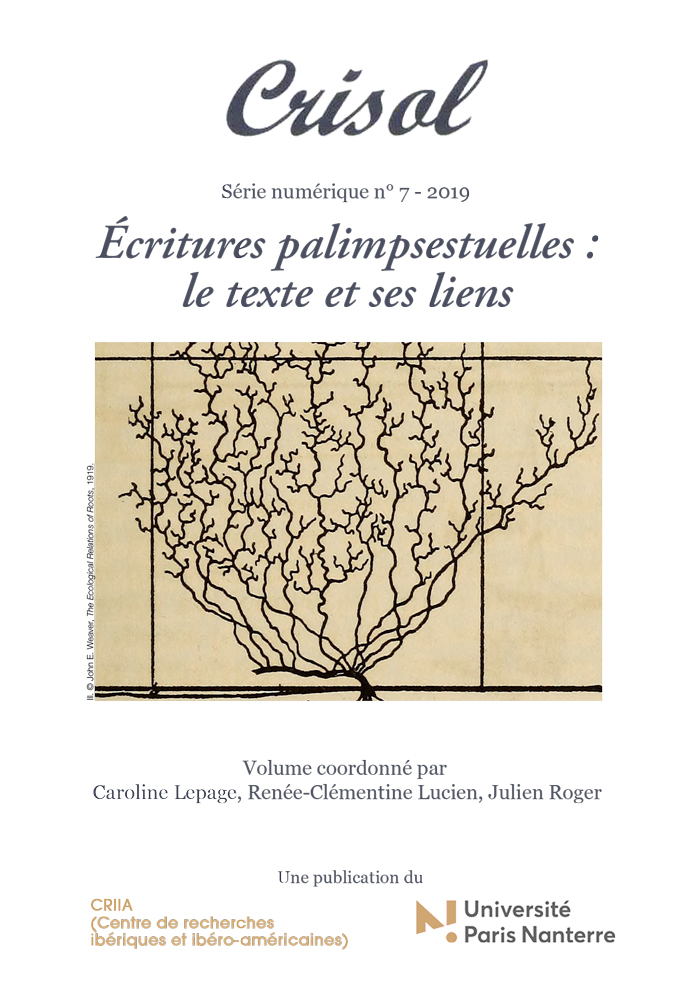Les scrapbooks de Purita Kalaw Ledesma (1914-2005): La transtextualité comme processus de production de l’histoire des arts philippins (1948-2000)
Resumen
Le scrapbook renvoie par essence à la transtextualité, comme le montrent les scrapbooks réalisés de 1948 à 2000 par la collectionneuse philippine Purita Kalaw Ledesma (1914-2005). L’assemblage des bouts de texte, les « scraps », y produit un discours qui les dépasse, et le « book » se fait espace mémoriel par l’intermédiaire du scrapbookeur qui remplit alors une fonction auctoriale. Purita Kalaw Ledesma « écrit avec des ciseaux » pour reprendre la belle expression d’Ellen Gruber Garvey, afin d’établir l’histoire de la vie artistique d’une nation naissante. Emblématiques d’une pratique transtextuelle constitutive d’un discours historique, les scrapbooks de Purita Kalaw Ledesma permettent aujourd’hui de retracer l’affirmation d’une philippineness, d’une identité nationale philippine, par le biais des arts plastiques.
Mots-clés : scrapbook, Philippines, art, Ledesma Kalaw, histoire, transtextualité.
El scrapbook por antonomasia remite a la transtextualidad, como muestran los scrapbooks realizados entre 1948 y 2000 por la coleccionista filipina Purita Kalaw Ledesma (1914-2005). El ensamblar los pedazos de textos, los « scraps », produce un discurso que los rebasa, en el que el « book » se convierte en espacio-memoria, mediante el « scrapbooker » que va asumiendo el papel de autor. Purita Kalaw Ledesma « escribe con tijeras » según la expresión de Ellen Gruber Garvey, para establecer la historia artística de una nación naciente. Por ser emblemáticos de una práctica transtextual constitutiva de un discurso histórico, los scrapbooks de Purita Kalaw Ledesma hoy permiten rastrear la afirmación de una philippineness, la identidad nacional filipina, a través de las artes plásticas.
Palabras clave: scrapbook; Filipinas; arte; Ledesma Kalaw; historia; transtextualidad
Scrapbook inherently refers to transtextuality, as shown by the scrapbooks made between 1948 and 2000 by the Filipino art collector Purita Kalaw Ledesma (1914-2005). Assembling and gluing pieces of texts -the scraps- produce a discourse that goes far beyond them, in which the book becomes a space for memory and the scrapbooker assumes the role of author. Purita Kalaw Ledesma “writes with scissors” in Ellen Gruber Garvey’s words, to establish the art history of the Filipino nascent nation. Being a transtextual practice that builds historical discourse, Purita Kalaw Ledesma’s scrapbooks allow us to trace the affirmation of the philippineness through visual arts.
Key words : scrapbook ; Philippines ; art ; Ledesma Kalaw ; history ; transtextuality



